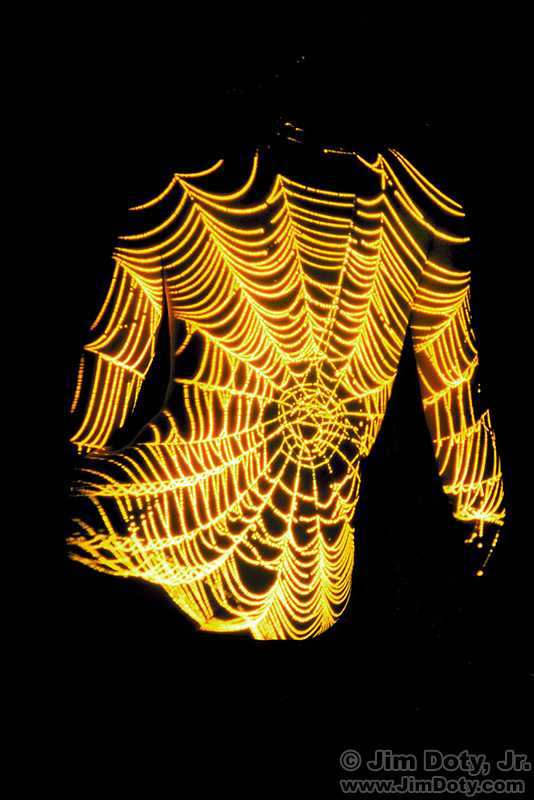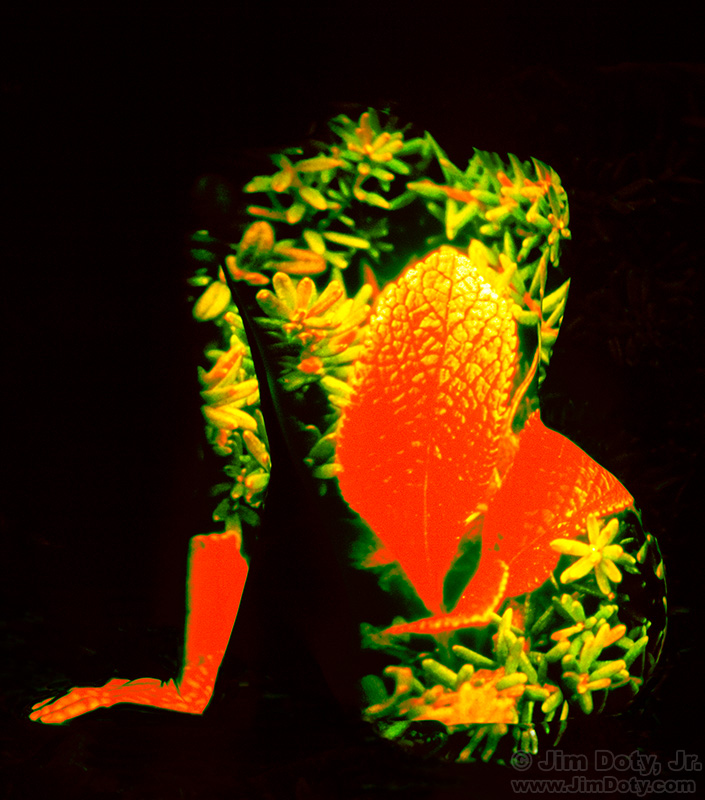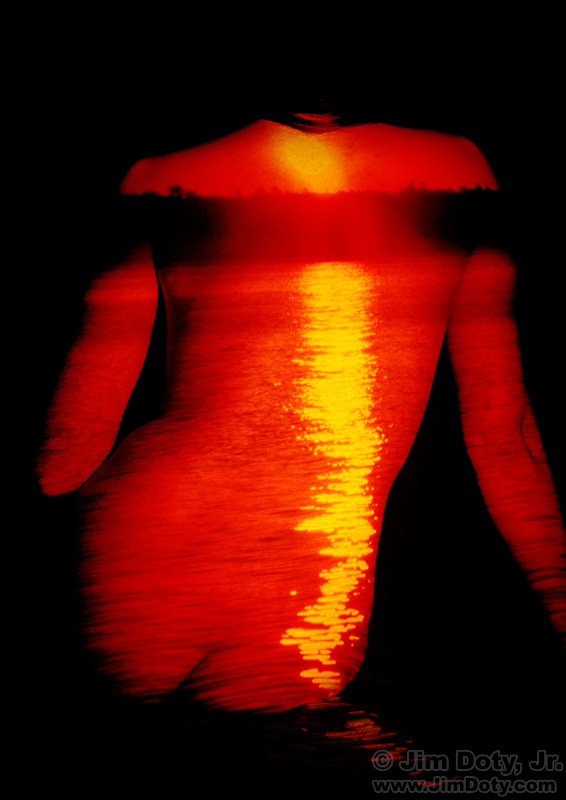I created this image for a photography class I was teaching at the Kalamazoo Institute of Arts (KIA) in Michigan. It was so popular that Jim Riegel, the head of the photography department, asked if he could exhibit it at the KIA faculty exhibit at the annual Kalamazoo Art Fair in Bronson Park in June. Jim was in charge of the faculty exhibit. When June 2, 2001 rolled around, he used it as the centerpiece work of art for the KIA exhibit. At the end of the day he told me it was the most talked about work of art in the faculty exhibit. All kinds of people stopped by to ask questions about it and how it was created. This article explains how I did it.
The most common questions I am asked are, “Is this some kind of clever double exposure? or “Some kind of digital composite?” The answer is no. This image was created with a single click of the shutter using a film camera. It was 23 years ago today. Digital cameras were still in their infancy and I had not yet switched over.
It started with an idea. For a long time I have used a slide projector to project images on three dimensional objects, and photographed the result. One night I set up a slide projector and projected a photo on a school building. I set up a camera on a tripod and photographed the image on the school building.
This time my idea was to project several slides on the back of a young woman. My first task was to find a young woman who was comfortable being unclothed with her back toward the camera. The person I found was not a model and she had never done anything like this before, but she was intrigued by the artistic idea. It was a first for me too. I had never photographed a young woman with no clothes on.
I started picking out a variety of slides (transparencies) for the project. One of them was a photo of Bearberry that I photographed in Alaska.
The best day for both of us to work on this project was March 16, 2001. When the day arrived I was super nervous.
In a room I could make completely dark, I hung a black, cloth backdrop at one end of the room to have a non-reflective background. The large backdrop hung vertically from the backdrop stand down to the floor and then extended several feet forward on the floor toward the camera.
The model sat on the floor part of the backdrop and faced the vertical part of the backdrop with her back toward the camera.
I was at the other end of the room with a slide projector on a stand and a camera on a tripod that was close to the slide projector. I had my choice of several analog slides ready to use.
Of all the slides I tried, my favorite was a dew-covered spider web which was backlit by the morning sun. The background behind the spider web was dark so the slide consisted only of the very tiny dew drops on the web, back-lit by the sun. I found the spider web one morning in my back yard in Oklahoma.
I put it in the slide projector and projected the spider web on the model’s bare back. The room was totally dark except for the photo of the spider web projected on her back. I didn’t want any extraneous light in the room to mess with the image. I focused the camera on her back and photographed the spider web on her back.
Unlike today when you get instant feedback on the back of your digital camera, I was using slide film so I couldn’t see the results of our efforts. The spider web on her back made for a tricky exposure. With all the black areas I knew the camera meter would tend to overexpose the image in its attempt to lighten the black areas. I bracketed using a variety of shutter speeds to make sure one of the exposures worked. The shutter speeds were all long, making the tripod essential.
The cool thing about this image is the way the projected image of the spider web wraps around the curves of her body.
The Human Web is one of my all time favorite portraits.
This photo was created the same way as the others. I used a photo of a sunrise over Little Bay de Noc in Michigan’s Upper Peninsula.
I thought at the time this would be the one and only time I would photograph a young woman with no clothes on. I was wrong. Several years later an art model asked me to photograph her.
Series Link



